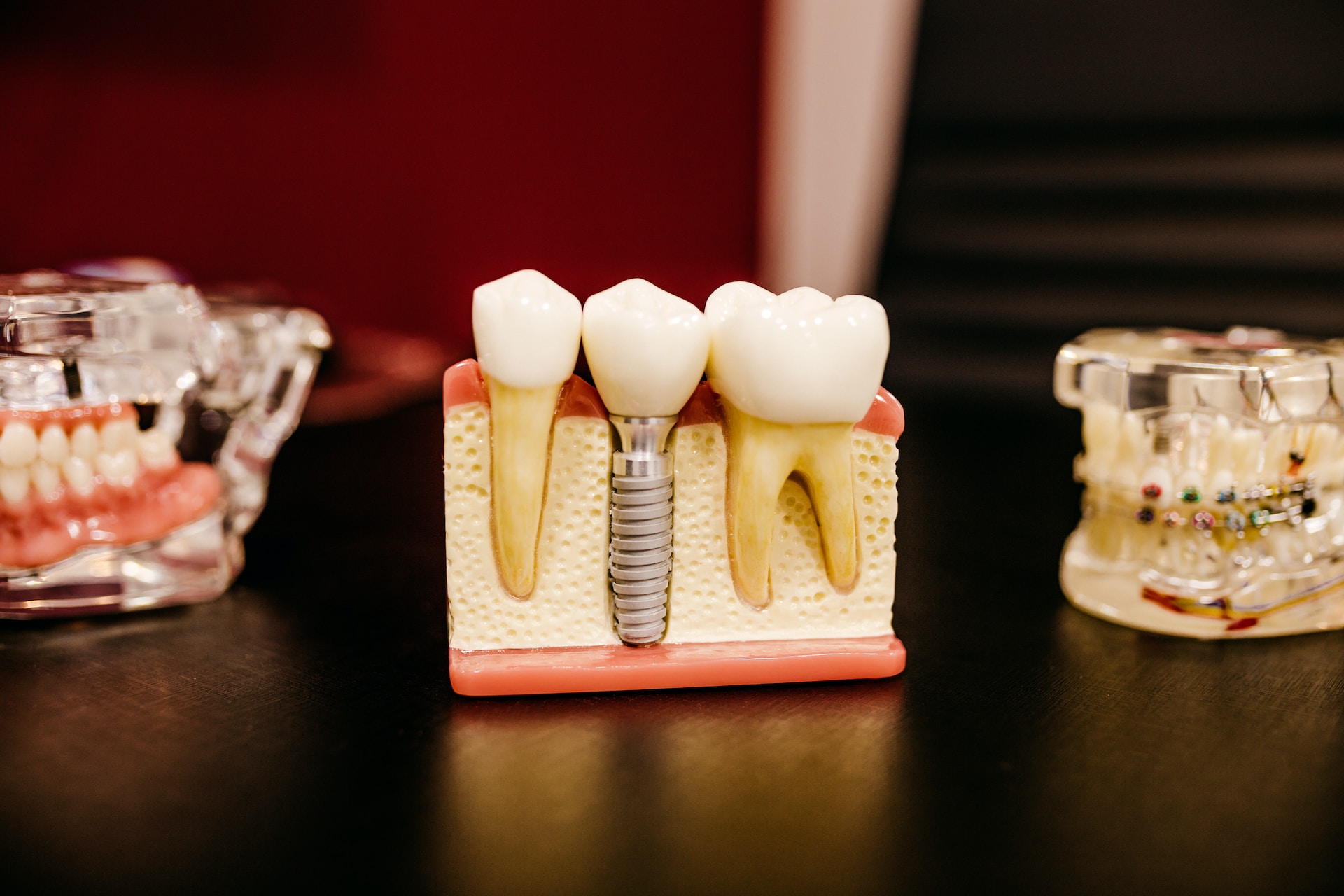Welcome to the realm of pain-free dentistry! In this guide, we delve into the intricate question: ‘How Long Does a Root Canal Take?’ Uncover the secrets of this often misunderstood dental procedure, exploring timelines, debunking myths, and understanding the journey from diagnosis to recovery.
Root canals, technically endodontic therapy, are your dental superhero, offering relief from tooth pain. Let’s navigate the fascinating world of root canals with precision, dispelling fears and embracing the journey to dental wellness. Get ready to discover the clockwork behind painless root canals and take charge of your dental health!
Key Takeaways
- Root Canal Basics: Understand the fundamentals of a root canal, technically known as endodontic therapy, aimed at treating infected or damaged tooth pulp.
- Indications for Root Canals: Explore the reasons why a root canal may be necessary, ranging from untreated cavities to trauma and deep fillings.
- Signs You Need a Root Canal: Recognize potential indicators such as severe toothache, sensitivity, swollen gums, discoloration, and the presence of a pimple on the gums.
- Procedure Timeline: Gain insights into the step-by-step process of a root canal, from diagnosis and anesthesia to filling, sealing, and potential restoration.
- Pain Perception: Debunk the myth of root canals being painful and learn about the advancements in dental techniques and anesthesia that contribute to a more comfortable experience.
- Procedure Duration for Different Teeth: Understand the varying timeframes for root canals on front teeth, premolars, molars, and those requiring crowns.
- Healing Process: Delve into the timeline of post-procedure relief, discomfort, and the complete healing of a root canal-treated tooth.
What is a Root Canal Procedure?
A root canal, technically known as endodontic therapy, is a dental procedure designed to treat the inside of a tooth when the pulp, the soft tissue containing nerves, blood vessels, and connective tissue, becomes infected or damaged. The goal is to remove the infected or damaged pulp, clean and shape the root canals, and then fill and seal the space to prevent future infection.
Why Would I Need a Root Canal?
There are several reasons why a root canal may be necessary:
- Tooth Decay: When a cavity is left untreated, it can reach the pulp, leading to infection and inflammation.
- Trauma: A traumatic injury to a tooth can cause damage to the pulp, necessitating a root canal.
- Deep Fillings: Repeated dental procedures or deep fillings close to the pulp may cause irritation and inflammation, requiring root canal therapy.
- Cracks or Chips: Trauma or biting on hard objects can result in cracks or chips in the tooth, exposing the pulp to bacteria.
- Infected Gums: Gum disease can cause infection to spread to the tooth’s pulp, requiring intervention.
How Do You Know If You Need a Root Canal?
Several signs may indicate the need for a root canal:
- Severe Toothache: Persistent and intense pain, especially when chewing or applying pressure, can indicate pulp inflammation.
- Sensitivity: Increased sensitivity to hot or cold temperatures that lingers even after the stimulus is removed.
- Swollen Gums: Swelling or tenderness in the gums near a specific tooth may suggest infection.
- Darkening of the Tooth: Discoloration of a tooth may indicate damage or death of the pulp.
- Pimple on the Gums: A pimple-like bump on the gums, known as a dental abscess, can be a sign of infection.
How Long Does a Root Canal Take to Perform?
The duration of a root canal procedure can vary depending on factors such as the tooth’s location, the case’s complexity, and the patient’s anatomy. A straightforward root canal may take about 1 to 2 hours on average. However, more complex cases or those involving multiple roots may require additional time.
The procedure involves several distinct steps:
-
Diagnosis and Assessment: (Appointment for 30 to 60 minutes)
- The dentist begins by conducting a thorough examination, often involving X-rays to assess the extent of the damage and determine the root canal’s anatomy.
-
Local Anesthesia: (5 to 10 minutes)
- Before commencing the actual procedure, the dentist administers local anesthesia to numb the affected tooth and surrounding area. This ensures that the patient experiences minimal discomfort throughout the process.
-
Access Opening: (5 to 10 minutes)
- Once the tooth is numb, the dentist creates an access opening in the crown (top) of the tooth. This allows access to the pulp chamber and root canals.
-
Pulp Removal: (20 to 40 minutes)
- Specialized instruments are used to carefully remove the infected or damaged pulp from the pulp chamber and root canals. The space is thoroughly cleaned to eliminate bacteria and debris.
-
Cleaning and Shaping: (20 to 40 minutes)
- The root canals are meticulously cleaned and shaped to facilitate the subsequent filling process. This step is crucial in preventing future infections and promoting the tooth’s long-term stability.
-
Filling and Sealing: (20 to 30 minutes)
- The cleaned root canals are filled with a biocompatible material, typically gutta-percha, to seal the space and prevent bacterial reinfection. The access opening in the crown is also sealed.
-
Restoration: (30 minutes to 1 hour, if needed)
- Depending on the tooth’s condition and the extent of structural loss, a restoration may be required. This can involve placing a dental crown to protect and strengthen the treated tooth.
How Painful is a Root Canal?
Contrary to the common perception that root canals are painful, advancements in dental techniques and anesthesia have significantly minimized discomfort during the procedure.
- Local Anesthesia:
- Before starting the root canal, the dentist administers local anesthesia to numb the affected tooth and the surrounding area. This ensures that the patient does not feel pain during the procedure.
- Painless Procedure:
- Once the anesthesia takes effect, the dentist works on the tooth without causing pain. Patients may feel pressure or vibrations, but they should not experience sharp pain.
- Post-Procedure Discomfort:
- After the procedure, some patients may experience mild discomfort or soreness, which is typically manageable with over-the-counter pain medications. This discomfort is a result of the body’s natural healing process and is temporary.
- Advancements in Technology:
- Modern dental equipment, such as rotary instruments and electronic apex locators, allows for more efficient and precise root canal procedures, contributing to a smoother and less painful experience for patients.
Also Read: From Ache to Relief: The Ultimate Guide to Tackling Jaw Pain on One Side
Root Canal Procedure Timelines for Different Types of Teeth
The duration of a root canal procedure can vary based on factors such as the tooth’s location, complexity, and the individual’s oral health. Here’s a general overview of the expected timeframes for root canals on different types of teeth:
-
Front Tooth (Incisors and Canines):
- Timeframe: Approximately 1 to 1.5 hours
- Front teeth typically have a single root canal, making the procedure more straightforward and quicker compared to molars. The simplicity of the root canal on front teeth often contributes to a shorter overall time.
-
Premolar:
- Timeframe: Approximately 1.5 to 2 hours
- Premolars generally have one or two roots, making them less complex than molars. The root canal procedure on a premolar falls within a moderate time range, with factors such as the tooth’s location and anatomy influencing the overall duration. The procedure time for a premolar is typically shorter than that for molars but may be slightly longer than for front teeth.
-
Molar (Typically Lower Molar):
- Timeframe: Approximately 2 to 2.5 hours
- Lower molars, such as the lower first or second molars, often have multiple roots and a more intricate root canal system. This complexity can increase the overall time required for the procedure.
-
Root Canal with Crown:
- Timeframe: The root canal and crown placement are usually separate procedures.
- Root Canal: As mentioned above, the time for the root canal portion can vary based on the tooth type, ranging from 1 to 2.5 hours.
- Crown Placement: After the root canal, the tooth may need time to heal. The crown placement is a separate procedure and may take an additional 1 to 2 hours. This can be done on a different day or during the same appointment, depending on the dentist’s approach.
-
Tooth 14 (Upper Left First Molar):
- Timeframe: Approximately 1.5 to 2 hours
- Upper molars, like tooth 14, usually have three roots and can be more complex. The additional roots and the intricate root canal system may extend the procedure time compared to the front teeth.
It’s essential to note that these timeframes are general estimates, and actual procedure times may vary based on the individual case and the dentist’s technique. Additionally, factors such as the presence of infection, the need for additional treatments, and the patient’s overall oral health can influence the duration of the root canal procedure. Always consult with your dentist for personalized information related to your specific dental needs.
How Long Does a Root Canal Take to Stop Hurting?
The pain associated with a root canal should significantly diminish shortly after the procedure. Many patients experience immediate relief as the damaged or infected pulp, which was the source of the pain, has been removed. However, some mild discomfort or sensitivity may persist for a few days following the root canal.
- Immediate Relief: Most patients notice a reduction in pain immediately after the root canal procedure due to the removal of the infected or damaged pulp.
- Post-Procedure Discomfort: It’s common to experience mild discomfort or sensitivity for a few days. This can usually be managed with over-the-counter pain medications as recommended by your dentist.
- Complete Relief: Within a week or two, the tooth should feel significantly better, and any residual discomfort should continue to subside.
How Long Does a Root Canal Take to Heal Completely?
The complete healing of a root canal-treated tooth can take some time. The timeline varies based on individual factors and the severity of the initial condition.
- Initial Healing: The initial healing phase occurs in the days and weeks following the root canal procedure. During this time, any inflammation or irritation in the surrounding tissues should subside.
- Long-Term Healing: The tooth continues to heal and stabilize over the next several weeks to months. The healing process involves the formation of new bone around the tooth’s roots.
- Follow-Up Appointments: Your dentist may schedule follow-up appointments to monitor the healing progress and may recommend additional treatments or a final restoration, such as a dental crown.
- Complete Healing: Complete healing can take several months, during which the tooth’s function and stability gradually improve.
What Happens If My Root Canal Fails?
While root canal procedures are generally successful, there is a slight risk of failure. Failure may occur due to several reasons:
- Persistent Infection: If bacteria persist in the root canals or if the infection is extensive, it can lead to treatment failure.
- Incomplete Sealing: If the root canals are not adequately sealed, bacteria may re-enter, causing reinfection.
- Cracked Tooth: A cracked or fractured tooth may not respond well to root canal treatment, leading to failure.
- Undetected Canals: In some cases, the dentist may miss small or hidden canals during the procedure, contributing to treatment failure.
Caring Tips for Root Canal Procedures
- Regular Dental Check-ups: Proactively address dental issues before they escalate, reducing the likelihood of extensive treatments like root canals.
- Prompt Treatment: Act swiftly if you experience signs like severe pain or swollen gums, as timely intervention can enhance the success of a root canal.
- Follow-up Appointments: Adhere to your dentist’s follow-up schedule to monitor healing progress and address any concerns promptly.
- Maintain Oral Hygiene: A healthy oral routine significantly contributes to preventing tooth decay and the need for invasive procedures like root canals.
Final Thoughts
In conclusion, this article demystifies the root canal procedure, offering a comprehensive overview for those contemplating or undergoing this dental treatment. By unraveling the complexities surrounding why and how root canals are performed, understanding the pain perception, and acknowledging the healing process, readers are equipped with valuable knowledge to make informed decisions about their dental health. Embrace this guide to navigate the world of root canals with confidence and clarity.
Also Read: Cavity vs. Stain: Unveiling the Science Behind Dental Dilemmas
FAQs
- Q: Is a root canal painful?
- A: No, modern advancements in dental techniques and anesthesia minimize discomfort during the procedure.
- Q: How long does a root canal take on average?
- A: The duration varies but generally ranges from 1 to 2.5 hours, depending on factors like tooth location and complexity.
- Q: What are the signs that I may need a root canal?
- A: Signs include severe toothache, sensitivity to hot or cold, swollen gums, tooth discoloration, and the presence of a pimple on the gums.
- Q: How long does post-procedure discomfort last?
- A: Mild discomfort or sensitivity may persist for a few days, usually manageable with over-the-counter pain medications.
- Q: What happens if my root canal fails?
- A: Failure could result from persistent infection, incomplete sealing, a cracked tooth, or undetected canals; consult your dentist for further evaluation.
- Q: Do all root canal procedures require a dental crown?
- A: Not necessarily; the need for a crown depends on the tooth’s condition and the extent of structural loss.
- Q: How often should I have a dental check-up to prevent root canals?
- A: Regular dental check-ups, at least twice a year, can help identify and address issues before they necessitate extensive treatments like root canals.
#DentalHealth #RootCanalAwareness #OralCare101 #ToothPainRelief #DentalMyths #PainlessRootCanal #DentalProcedures #OralHygieneMatters #EndodonticTherapy #HealthySmiles #DentalWellness #ToothacheSolutions #RootCanalRecovery #DentalCheckups #ModernDentistry
Note: The information provided in this article is for educational purposes only and should not be taken as medical advice. For personalized health recommendations, it is always advisable to consult with a healthcare professional before incorporating any changes to your daily health routine.








No comment yet, add your voice below!